|
|
|
 |
F/A - 18 Super Hornet ver. E, F Pilot`s glossary Hornet model for 3D Studio |
|
|
|
 |
F/A - 18 Super Hornet ver. E, F Pilot`s glossary Hornet model for 3D Studio |
| Nation: | USA |
|
||||||
| Manufacturer: | McDonnell Aircraft Co | |||||||
| Type: | Class A assault fighter | |||||||
| Year: |
first flight (160775) 18 November 1978 11 aircraft flying by March 1980 |
|||||||
| Wingspan: | 37 ft 6 in (11.43 m) | |||||||
| Lenght: | 56 ft (17.07 m) | |||||||
| Height: | 15 ft 4 in (4.66 m) | |||||||
| Weight: |
44,000 lb (19,960 kg) (loaded) (10,810 kg) empty |
|||||||
| Maximum speed: | 1,320 mph (2,125 km/h) | |||||||
| Approach speed: | 134 knots | |||||||
| Max fuel internal: | 4,926 kg | |||||||
| Max fuel external: | 3,053 kg | |||||||
| Celling: | 50,000 ft (15,240 m) | |||||||
| Combat radius: | 460 miles (740 km) | |||||||
Maximum range: |
2000 miles | |||||||
Crew: |
A, C versions 1 B, D versions 2 |
|||||||
Armament: |
M61A1 20mm Vulcan cannon 9 hardpoints capable of carrying up to 17,000 lbs of ordnance |
|||||||
| Feature | F404-GE-400 | F404-GE-402 |
|---|---|---|
| Maximum Length (In.) |
|
|
| Maximum Diameter (In.) |
|
|
| Inlet Flow Path Diameter (In.) |
|
|
| Nozzle Area Ratio |
|
|
| Maximum Weight (Lbs) |
|
|
| Air Flow at IRP and Above (Lb/Sec) |
|
|
| Bypass Ratio |
|
|
| Maximum Thrust (Class) |
|
|
| T4 J(class) (F) |
|
|
| Engine Compression Ratio |
|
|
| Fan Pressure Ratio |
|
|
| Compressor Pressure Ratio |
|
|
| Thrust to Weight Ratio (Class) |
|
|
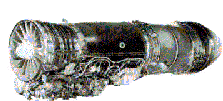 The F404-GE-400 and the F404-GE-402 (hereafter referred to as the F404) and dual rotor, augmented, low-bypass turbofan engines. They are modular engines which incorporate a 3-stage fan and a 7-stage high pressure compressor each driven by a single stage turbine. They have variable geometry inlet guide vanes on the fan and compressor, and continuous bypass from the fan to the augmentation section. The combustor is a through-flow annular type, and the augmentor is fully modulating from minimum to maximum augmentation. The engine is continuously monitored for critical malfunctions and parts life usage by an Inflight Engine Condition Monitoring System (IECMS). |
||
|
Design Features Sharp-edged, cambered leading-edgeextensions
(LEX), slots at fuselage junction and outward-canted twin fins
designed to produce high agility and performance at angles of
attack over 50°; wings have 20° sweepback at quarter-chord;
wings fold up 90° at inboard end of ailerons, even on land-based
F/A-18s; |
|
Structure Multi-spar wing mainly of
light alloy, with graphite/epoxy inter-spar skin panels and trailing-edge
flaps; |
|
Accommodation Pilot only, on Martin-Baker SJU-5/6 ejection seat, in pressurised, heated and air-conditioned cockpit. Upward opening canopy, with separate windscreen, on all versions. |
|
Avionics Include an automatics carrier landing system (ACLS) for all-weather carrier operations; a Hughes Aircraft AN/APG-65 multi-mode digital air-to-air and air-to-ground tracking radar, with air-to-air modes which include velocity search (VS), range while search (RWS), track while scan (TWS), which can track 10 targets and display eight to the pilot, and raid assessment mode (RAM). Hughes AN/APG-73 radar in C/Ds for USN, USMC, Finland, Malaysia and Switzeland from May 1994. Smiths Industries multi-purpose colour map display; two Kaiser monochrome MFDs (colour on Night Attack Hornets). Collins AN/ARN-118 Tacan, AN/ARC-182 UHF/VHF com and DF-301E UHF/DF; Magnavox AN/ALR-50 and Litton AN/ALR-67 RWRs; GEC-Marconi Type 117 laser designator; Harris AN/ASW-25 radio data link; Eaton AN/ARA-63 receiver/decoder; GEC-Marconi FID 2035 horizontal situation display; Bendix/King HSI; J.E.T. ID-1791/A flight director indicator; General Electric quadruple-redundant fly-by-wire flight control system, with direct electrical backup to all surfaces and direct mechanical backup to tailerons; two Control Data AN/AYK-14 digital computers; Litton AN/ASN-130A inertial navigation system (plus GPS from FY 1993), but being replaced by Litton AN/ASN-139 ring laser system (including retrofits); two Kaiser multi-function CRTs, central GEC-Marconi-Bendix/King CRT and Kaiser AN/AVQ-28 HUD; Conrac communications system control; Normalair-Garrett digital data recorder for Bendix/King maintenance recording system; flight incident recording and monitoring system (FIRAMS). |
|
The Hornet was designed around the same time as the F-16 and was in fact developed from the Northrop YF-17, failed F-16 competetitor. As result, it shares some of the characteristics of the Falcon: it is light, cheap and quite agile. These qualities, coupled with its immense ordnance load, make it the strike fighter of choice for both the Navy and the Marines. All production Hornets since 1989 have all-weather and night attack capability. Laser designator pods and the Hughes AN/APG-65 radar package give excellent accuracy in the air threat; however, as it serves alongside the dedicated air-to-air Tomcat, the Hornet is almost always used in the attack role. The F/A-18 has a digital control-by-wire flight control system which provides excellent handling qualities, and allows pilots to learn to fly the airplane with relative ease. At the same time, this system provides xceptional maneuverability and allows the pilot to concentrate on operating the weapons system. A solid thrust-to-weight ratio and superior turn characteristics combined with energy sustainability, enable the F/A-18 to hold its own against any adversary. The power to maintain evasive action is what many pilots consider the Hornet's finest trait. In addition, the F/A-18 was also the Navy's first tactical jet aircraft to incorporate a digital, MUX bus architecture for the entire system's avionics suite. The benefit of this design feature is that the F/A-18 has been relatively easy to upgrade on a regular, affordable basis. Following a successful run of more than 400 A and B models, the U.S. Navy began taking fleet deliveries of improved F/A-18C and F/A-18D models in September 1987. These Hornets carry the AMRAAM and the infrared imaging Maverick air-to-ground missile. Two years later, the C/D models came with improved night attack capabilities. The new components included a navigation forward looking infrared (NAVFLIR) pod, a raster head-up display, night vision goggles, special cockpit lighting compatible with the night vision devices, a digital color moving map and an independent multipurpose color display. The Hornet has been battle tested and has proved itself to be exactly what its designers intended: a highly reliable and versatile strike fighter. The F/A-18 played an important role in the 1986 strikes against Libya. Flying from USS CORAL SEA (CV 43), F/A-18s launched HARMs against Libyan air defense radars and missile sites, effectively silencing them during the attacks on Benghazi facilities. On the first day of operation Desert Storm, two F/A-18s, each carrying four 2,000 lbs. bombs, shot down two Iraqi MiGs and then proceeded to deliver their bombs on target. Throughout the Gulf War, squadrons of U.S. Navy, Marine and Canadian F/A-18s operated around the clock, setting records daily in reliability, survivability and ton-miles of ordnance delivered. The F/A-18 has proven to be
an ideal component of the carrier based tactical aviation equation
over its 15 years of operational experience. The only F/A-18
characteristic found to be marginally adequate by battle group
commanders, outside experts, and even the men who fly the Hornet,
is its range when flown on certain strike mission profiles. However,
the inadequacy is managed well with organic and joint tanking The F/A-18's advanced radar and avionics systems allow Hornet pilots to convert their aircraft from fighter to strike mode and back with the flip of a single switch. In Operation Desert Storm, F/A-18s performed fighter and stike missions on the same sortie, fighting their way to a target by defeating opposing aircraft, then destroying their ground targets and returning safely home. The F/A-18 also employs a number of other systems and technologies that increase its likelihood of reaching a target undetected, of escaping unhurt if detected, and of returning its crew safely if it is hit. The aircraft's reliability, survivability and maintainability were also proven during Operation Desert Storm as the aircraft broke all records for tactical aircraft. In one scenario, F/A-18s were hit by surface-to-air missiles; returned safely; were repaired and flying again the next day. The F/A-18 serves in the air forces of the United States and Canada, Australia, Finland,Spain, Thailand, Malaysia, Switzerland; Kuwait was scheduled to receive Hornets beginning in 1994 before the Gulf War broke out. |
 |
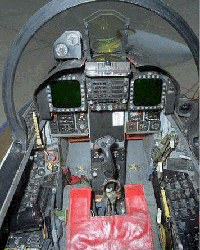 |
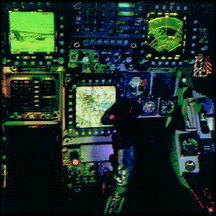 |
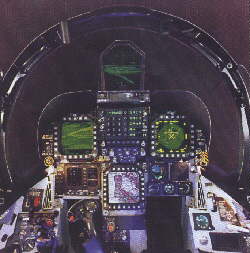 |
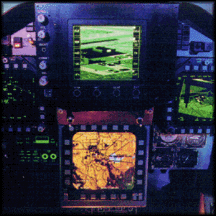 |
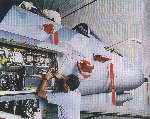 |
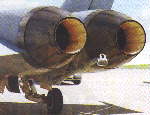
|
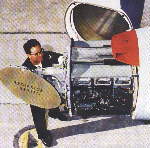 nose radar system |
 lantrin pods |
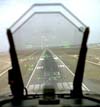 HUD display |
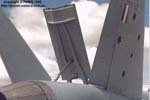 breaking sheeld |
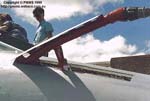 nose refueling drone |
|
|
Landing gear |
|||
| Nation: | USA |

|
||
| Manufacturer: | McDonnell Aircraft Co. | |||
| Type: | Class A assault fighter | |||
| Year: | 29 November 1995 | |||
| Engine: | two General Electric F414-GE-400 turbofans, 22,000 lb (9,955 kg) thrust each | |||
| Wingspan: | 44 ft 9 in (13.7 m) | |||
| Lenght: | 60 ft 3 in (18.4 m) | |||
| Height: | 16 ft (4.9 m) | |||
| Weight: | 66,000 lb (29,864 kg) (max takeoff) | |||
| Maximum speed: | Mach 1.8 + | |||
| Celling: | 50,000 ft + (15,240 m +) | |||
| Combat radius: | 420 Nm | |||
| Maximum range: | 2000 miles | |||
| Crew: | F/A 18 E:1; F/A 18 F: 2 | |||
| Armament: | M61A1 20 mm Vulcan cannon and nine hardpoints capable of carrying up to 17,750 lb (8,032 kg) of ordnance |
|
F414 ENGINE CHARACTERISTICS Length: 155.5 inches |
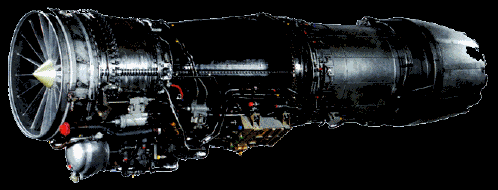 |
|
The F414-GE-400 is a low bypass turbofan engine with augmented thrust provided by an afterburner. The engine is 155.5 inches long, weighs 2,445 pounds, and has an inlet diameter of 30.6 inches. The engine is rated at 14,770 pounds thrust at the max power throttle settling without the afterburner. At the maximum afterburner throttle setting, the engine develops 21,890 pounds of thrust, given standard day conditions of 59o F and 0% humidity at sea level. The engine utilizes dual, axial flow rotor systems; a three stage fan rotor driven by a single stage low pressure turbine and a seven stage high pressure compressor rotor driven by a single stage high pressure turbine. Variable geometry vanes are employed on both rotor systems. On the fan rotor system, the inlet guide vanes can be angled 45o and stage one vanes can travel a total of 10o. The F414 engine control system utilizes a power management system. The power management system provides nearly constant thrust throughout the life of the engine, while maintaining full operational capability throughout the operating envelope. The engine is controlled by a FADEC (Full Authority Digital Electronic Control). The F414 FADEC consists of dual channel system, which allows full thrust modulation including afterburner in each channel. All scheduling and governing are performed by the FADEC. |
|
|
The F/A-18E/F aircraft are 4.2 feet longer than earlier Hornets, have a 25% larger wing area, and carry 33% more internal fuel which will effectively increase mission range by 41% and endurance by 50%. The Super Hornet also incorporates two additional weapon stations. This allows for increased payload flexibility by mixing and matching air-to-air and/or air-to-ground ordnance. The aircraft can also carry the complete complement of "smart" weapons, including the newest joint weapons such as JDAM and JSOW. Additionally, carrier recovery payload is increased to 9,000 pounds, and its engine thrust from 36,000 pounds to 44,000 pounds utilizing two General Electric F414 turbo-fan engines. Although 41% interdiction
mission range increase may be the most dramatic F/A-18E/F improvement,
the ability to recover aboard with optimal reserve fuel and a
load of expensive precision strike weapons, is of equal importance
to the battle group commander. The growth potential of the F/A-18E/F
is more important to allow flexible employment strategies in
future years. If an electronically scanned array antenna or nother Roll-out of the first Super Hornet occurred in September 1995, and it flew for the first time in November 1995, ahead of schedule and nearly 1,000 pounds under specified weight. In January 1997, the Super Hornet successfully conducted its initial sea trials on board the Navy's newest aircraft carrier, USS JOHN C. STENNIS (CVN 74). Currently, seven F/A-18E/F engineering and manufacturing development aircraft are engaged in a well-defined flight test program. The Navy is planning to procure a minimum of 548 Super Hornets. Production of the aircraft commenced in FY 1997, and it is expected to attain initial operational capability (IOC) in FY 2001. Twelve aircraft were funded in FY 1997; procurement numbers increase to 20 in FY 1998, 30 in FY 1999, and reach a final maximum rate of 48 per year in FY 2001. These numbers could vary depending on the progress of the Joint Strike Fighter Program. The U.S. Navy believes the F/A-18E/F Super Hornet is "the right airplane at the right time." Potential enemies will learn it is hard to find, hard to hit and hard to kill. The F/A-18E/F is on cost, on schedule, and remains under specified weight. |
|
 |
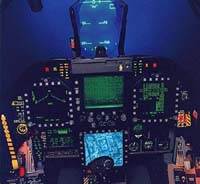 |
 |
